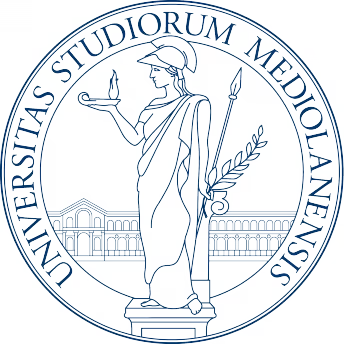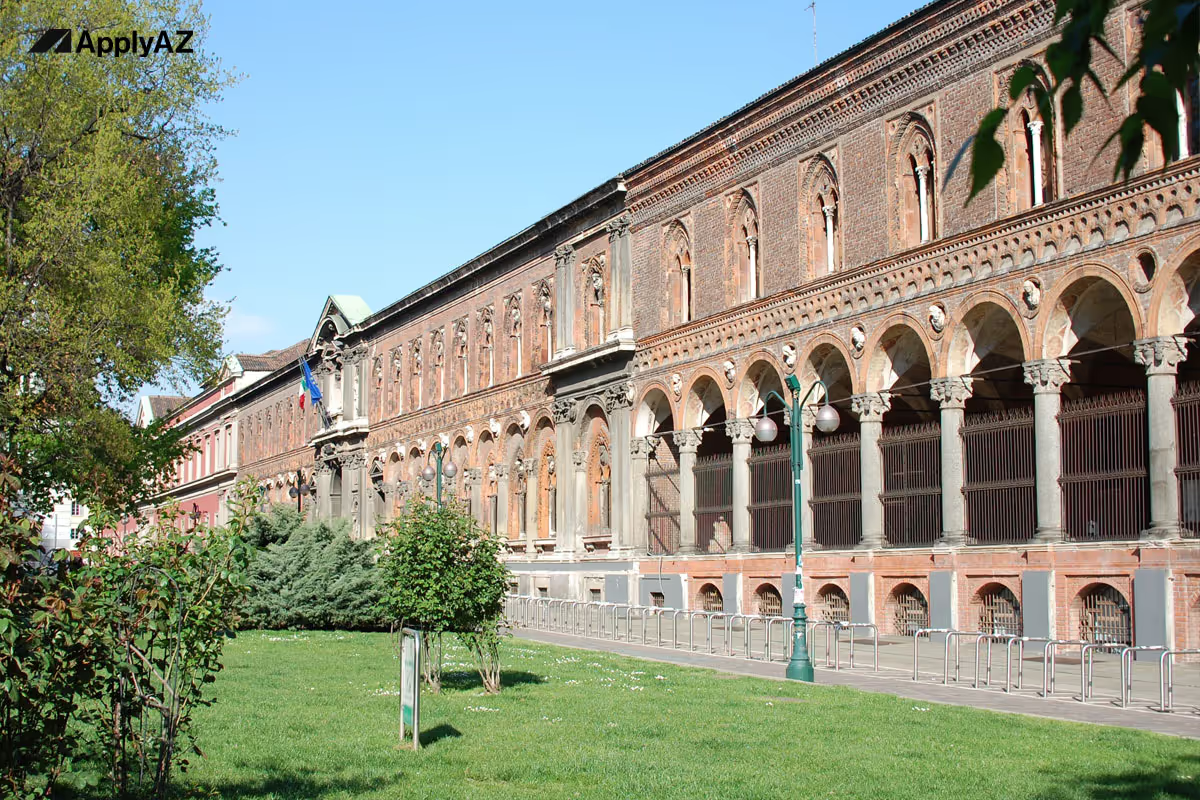Heading
Heading








University of Milan
English‑taught programs in Italy: breadth and quality
Founded in 1924, the University of Milan is a flagship among public Italian universities. It offers more than 15 full degrees entirely in English across life sciences, data science, economics, law, and the humanities. Small‑group seminars, modern laboratories, and research‑led teaching earn the university a consistent place in global top‑200 rankings for medicine, biology, and physics. Academic life blends lectures with project work and Erasmus+ exchanges, giving you both depth and international exposure.
Life in Milan: culture, costs, connections
Milan pairs Renaissance architecture with Europe’s fastest‑growing innovation district. Four metro lines, trams, and regional trains keep average commutes under 35 minutes, while student passes cut transport costs by half. Cafés stay open late for study sessions; world‑class music, design fairs, and football derbies fill weekends. Rents start around €400 per month in shared flats—pricey for Italy, but offset by campus dining at €4 per meal and the chance to share expenses with classmates.
Funding advantages: DSU grant and other support
As a state institution, Milan charges income‑linked tuition that ranges from €156 to roughly €3 000 per year. International students can apply for the DSU grant, which may waive tuition entirely and add a €7 000 living allowance, residence‑hall place, and meal vouchers. Merit scholarships reward top GPAs, and research assistant roles provide paid experience. With these tools, many graduates finish their master’s with little or no debt, mirroring the affordability of tuition‑free universities Italy promotes.
Career gateways in a global city
Milan is home to Italy’s stock exchange and to headquarters of companies such as IBM, Luxottica, and Nestlé. University partnerships cover more than 4 000 firms, feeding internships in finance, biotech, fashion tech, and AI start‑ups. Career Services run résumé labs, mock interviews, and on‑campus job fairs; 87 % of international graduates secure work or PhD places within seven months. Language tandems, alumni mentoring, and professional certification courses (Prince2, CFA Level I, Lean Six Sigma) further boost employability.
Five key takeaways
- Wide portfolio of English degrees backed by strong research.
- Dynamic metropolitan lifestyle with rich art and sport.
- Income‑based fees plus DSU grant make study highly affordable.
- Direct pipelines to internships and high‑growth careers.
- Supportive campus: libraries until midnight, 100+ clubs, free fitness classes.
In two minutes we’ll confirm whether you meet the basic entry rules for tuition‑free, English‑taught degrees in Italy. We’ll then quickly see if we still have space for you this month. If so, you’ll get a personalised offer. Accept it, and our experts hand‑craft a shortlist of majors that fit your grades, goals, and career plans. Upload your documents once; we submit every university and scholarship application, line up multiple admission letters, and guide you through the visa process—backed by our admission‑and‑scholarship guarantee.
Bioinformatics for Computational Genomics – LM‑8
English‑taught programs in Italy open doors for students who want top science without language barriers. When you study in Italy in English, you join a multicultural classroom, benefit from the low fees of public Italian universities, and may even qualify for financial support similar to tuition‑free universities Italy promotes through state grants. The LM‑8 Master’s in Bioinformatics for Computational Genomics at University of Milan (Università degli Studi di Milano) blends biology, data science, and high‑performance computing—preparing you to decode genomes and drive personalised medicine.
Why Study in Italy in English for Computational Genomics?
Global need for data‑driven biologists
Sequencing costs are falling, data volumes are exploding, and industry needs experts who can turn raw reads into clinical or agricultural value. This programme trains you to manage terabytes of DNA, RNA, and epigenetic information, linking algorithms to real‑world outcomes.
Affordable excellence
Public Italian universities charge moderate tuition. With the DSU grant and other scholarships for international students in Italy, many learners pay little or nothing and still access state‑of‑the‑art labs and supercomputers.
Cultural and professional depth
Italy hosts leading research centres, biotech start‑ups, and EU initiatives on health and biodiversity. Studying here means weekend visits to historic sites and weekday access to cutting‑edge projects.
Programme Overview: From Sequencer to Insight
The LM‑8 course spans two years (120 ECTS) and mixes lectures, coding labs, and research placements. You will:
- Learn core biology—genomics, transcriptomics, population genetics.
- Master data skills—Python, R, SQL, Unix, and cloud computing.
- Apply algorithms—machine learning, network analysis, structural bioinformatics.
- Explore ethics—data privacy, AI bias, and genomic equity.
- Complete a thesis with university groups or industry partners.
Curriculum Details
Year 1 – Foundations and Tools
- Molecular Genetics and Genomics – sequencing technologies, genome architecture, annotation.
- Programming for Bioinformatics – Python scripting, Git workflows, reproducible research.
- Statistics and Probability – hypothesis testing, Bayesian inference, multiple corrections.
- Algorithms in Comparative Genomics – alignment, phylogenetics, variant calling.
- Data Management and SQL – relational databases, FAIR principles, data governance.
Year 2 – Specialisation and Integration
- Systems Biology and Network Analysis – metabolic pathways, graph theory, interactomes.
- Machine Learning for Omics – classification, clustering, deep learning, feature selection.
- Epigenomics and Transcriptomics – ChIP‑seq, ATAC‑seq, single‑cell RNA‑seq pipelines.
- Structural Bioinformatics – protein modelling, docking, dynamics.
- Regulation and Ethics – GDPR, genomic consent, clinical guidelines.
- Thesis / Internship – six‑month research project in academia, hospital, or biotech firm.
English‑taught Programs in Italy: How This One Stands Out
High‑performance computing access
Students run jobs on national clusters, GPU nodes, and cloud platforms, gaining hands‑on experience with parallel processing and workflow managers such as Nextflow and Snakemake.
Industry links
Guest lecturers from pharma and agri‑tech present case studies on drug targets, crop improvement, and pathogen surveillance. Internship partners include diagnostic labs and AI‑genomics start‑ups.
Soft skills and outreach
Workshops teach grant writing, visual communication, and open‑science publishing. You practise explaining complex pipelines to clinicians, regulators, and the public.
Research culture
University of Milan hosts EU‑funded projects on rare diseases, cancer genomics, and biodiversity. Students join journal clubs, hackathons, and genome annotation sprints.
Core Competencies You Will Gain
- Pipeline development – automate alignment, variant calling, and annotation.
- Big‑data analytics – handle terabyte‑scale datasets, optimise memory, and parallelise tasks.
- Statistical modelling – link genotypes to phenotypes, perform GWAS, and control false discovery rates.
- Machine learning – build predictive models for drug response or pathogen evolution.
- Ethical reasoning – navigate consent, privacy, and equity in genomic data use.
These skills match roles across academia, healthcare, pharma, and agriculture.
Career Prospects
- Clinical bioinformatician – support precision oncology and rare disease diagnostics.
- Data scientist in biotech – design algorithms for CRISPR off‑target prediction or protein engineering.
- Agrigenomics specialist – accelerate breeding of climate‑resilient crops.
- PhD researcher – pursue computational biology at top institutes.
- Genomic policy advisor – guide regulators on data standards and patient rights.
Demand for genomics talent outruns supply, making graduates highly employable.
Funding: DSU Grant and Other Scholarships
DSU grant benefits
- Tuition waiver or major discount.
- Housing subsidies or dorm placement.
- Meal vouchers and transport allowances.
- Extra funds for books and hardware.
Selection is income‑based; ApplyAZ helps you prepare certified translations and meet deadlines.
Additional opportunities
- University merit scholarships for top applicants.
- Erasmus+ mobility for thesis work in another EU lab.
- Private foundation grants for women in STEM or students from low‑income countries.
Admission Pathway
- Eligibility – bachelor’s in biology, biotechnology, computer science, or related field, with strong quantitative coursework.
- English proficiency – IELTS/TOEFL or equivalent at B2 level.
- Application package
- CV and transcript.
- Motivation letter highlighting coding experience and genomic interest.
- Two academic references.
- Online submission – university portal opens each spring; early birds get faster decisions.
- Interview (optional) – discuss algorithm knowledge, project ideas, and problem‑solving approach.
- Funding forms – file DSU application between June and September.
- Visa and arrival – secure embassy appointment, arrange housing, join orientation week.
Tips for a Strong Application
- Showcase GitHub repositories or Kaggle notebooks analysing omics data.
- Highlight lab internships or research assistant roles.
- Explain how studying in a public Italian university aligns with your career.
- Mention outreach—science blogs, coding clubs, or volunteer teaching.
Clear, concise writing at CEFR B2 level demonstrates readiness for English‑medium classes.
Life on Campus: Beyond Sequencing Data
- Bioinformatics clubs host weekly coding challenges and journal discussions.
- Innovation labs connect you with entrepreneurs turning genomic ideas into start‑ups.
- Language exchanges let you learn Italian, though all coursework stays in English.
- Weekend explorations range from mountain hikes to arts festivals—balance lab time with cultural immersion.
These activities build networks that last long after graduation.
Why Public Italian Universities Lead in Genomics
- Research infrastructure – national HPC centres, biobanks, and sequencing cores.
- Collaborative environment – partnerships with hospitals, EU consortia, and biotech clusters.
- Affordable education – fees a fraction of those in many Anglophone countries.
- Interdisciplinary approach – Italy’s legacy in life sciences, statistics, and informatics converges here.
Together, these advantages create a fertile ground for computational genomics.
Closing Thoughts
The bio‑data revolution needs professionals who can translate raw sequences into medical and environmental solutions. By enrolling in this English‑taught master’s, you gain:
- Solid grounding in genomics and informatics.
- Experience with real‑world datasets and high‑performance tools.
- Exposure to EU research projects and industry innovations.
- Financial support that keeps education accessible.
This LM‑8 degree positions you at the forefront of personalised medicine, agri‑tech, and biodiversity research—fields that shape the future.
Ready for this programme?
If you qualify and we still have a spot this month, we’ll reserve your place with ApplyAZ. Our team will tailor a set of best-fit majors—including this course—and handle every form and deadline for you. One upload, many applications, guaranteed offers, DSU grant support, and visa coaching: that’s the ApplyAZ promise. Start now and secure your spot before this month’s intake fills up.

They Began right where you are










